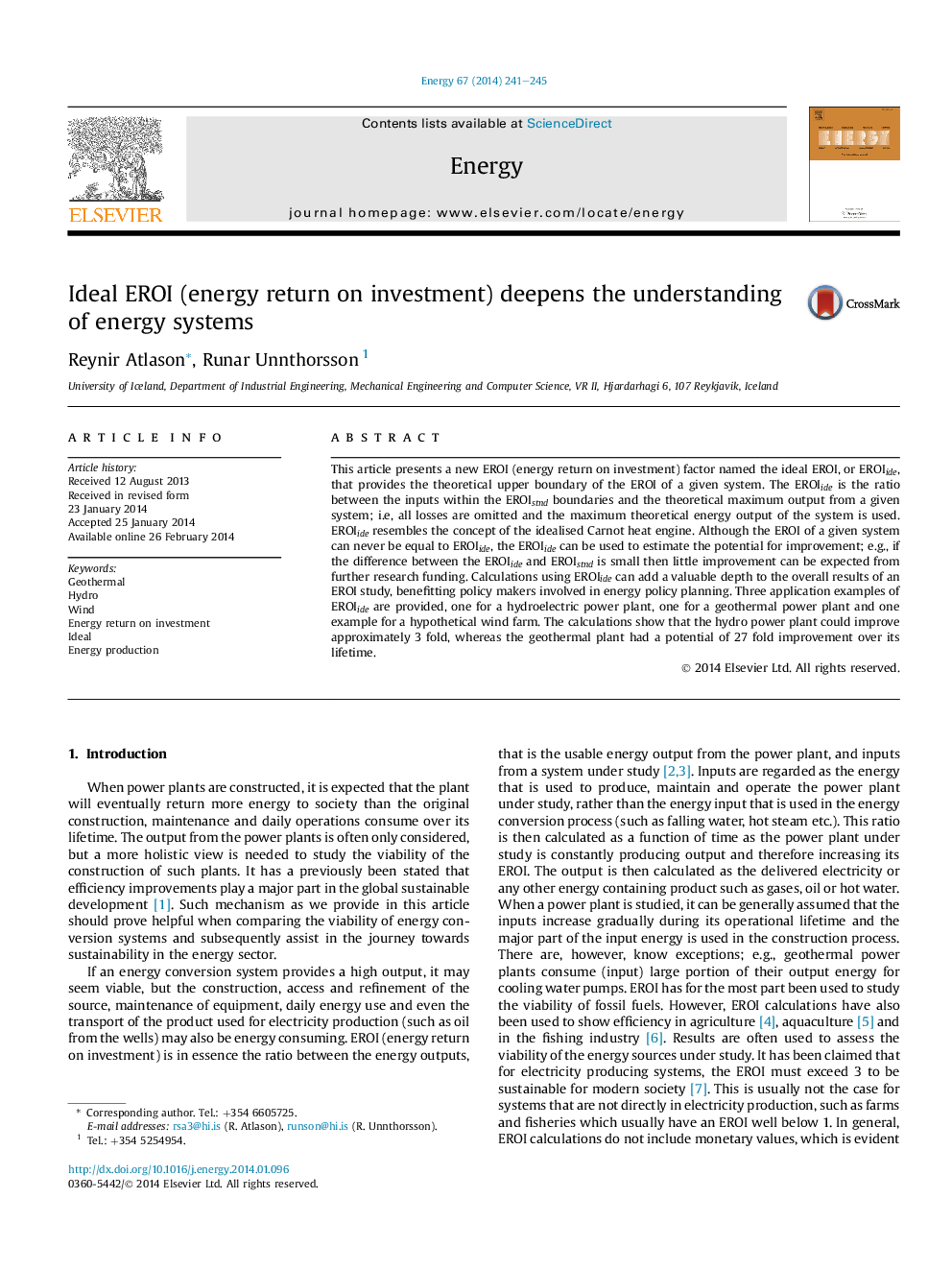| Article ID | Journal | Published Year | Pages | File Type |
|---|---|---|---|---|
| 1732554 | Energy | 2014 | 5 Pages |
•The article demonstrates a new EROI metric, EROI Ideal.•It further explains how to calculate such EROI.•Two case studies are shown, where hydro and geothermal power plants are studied.•A theoretical example of wind farm is shown.•Geothermal energy production was shown to have the greatest room for improvement of the energy sources studied.
This article presents a new EROI (energy return on investment) factor named the ideal EROI, or EROIide, that provides the theoretical upper boundary of the EROI of a given system. The EROIide is the ratio between the inputs within the EROIstnd boundaries and the theoretical maximum output from a given system; i.e, all losses are omitted and the maximum theoretical energy output of the system is used. EROIide resembles the concept of the idealised Carnot heat engine. Although the EROI of a given system can never be equal to EROIide, the EROIide can be used to estimate the potential for improvement; e.g., if the difference between the EROIide and EROIstnd is small then little improvement can be expected from further research funding. Calculations using EROIide can add a valuable depth to the overall results of an EROI study, benefitting policy makers involved in energy policy planning. Three application examples of EROIide are provided, one for a hydroelectric power plant, one for a geothermal power plant and one example for a hypothetical wind farm. The calculations show that the hydro power plant could improve approximately 3 fold, whereas the geothermal plant had a potential of 27 fold improvement over its lifetime.
